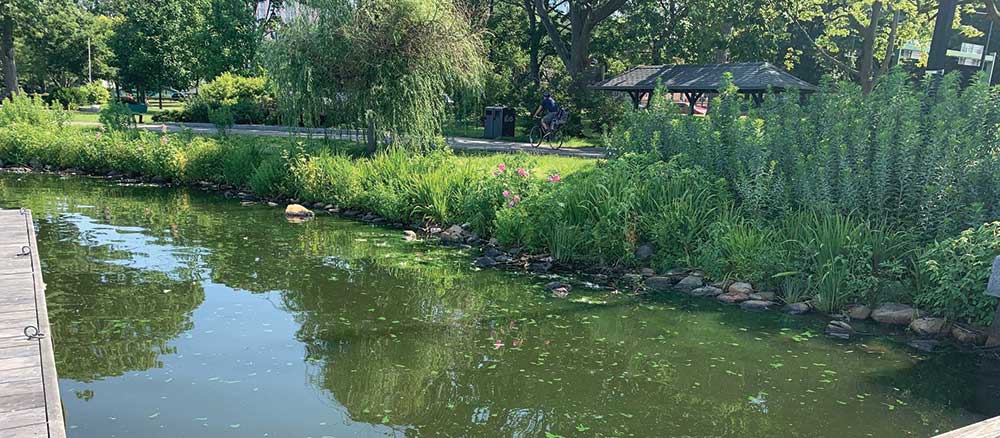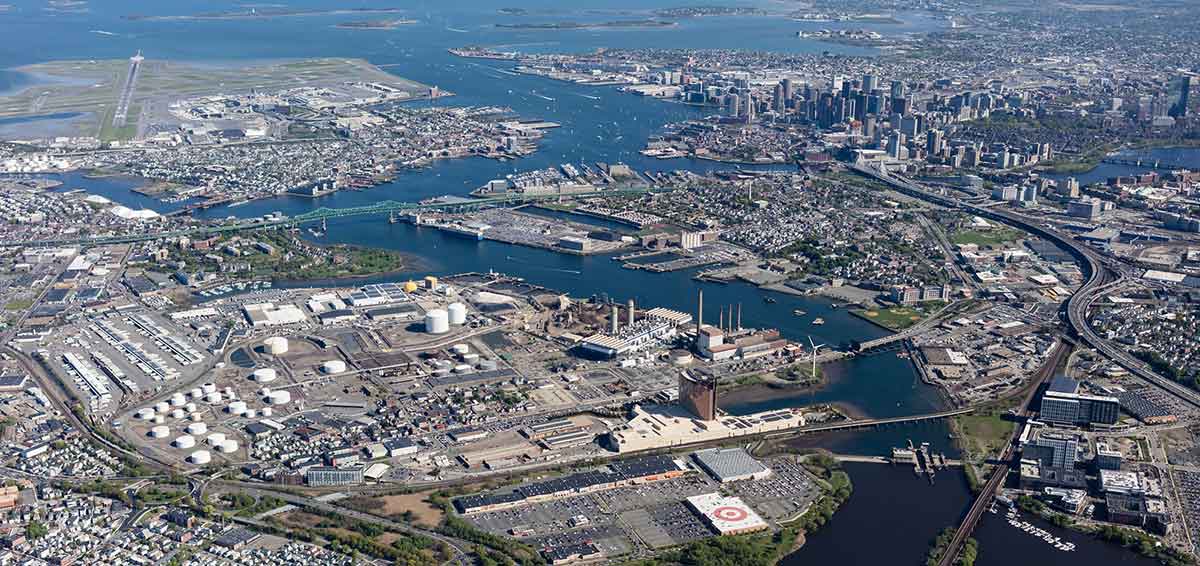Take a stroll along the Charles River on a nice weekend, and you’ll see why it’s considered one of the busiest watersheds in the country. Even at the height of the COVID-19 pandemic, joggers and walkers still threaded its shoreline paths; canoes, kayaks, and sculls plied its waters; and sailboats drifted along its currents.
But this scene is not as idyllic as it seems. Far too often these days, beautiful afternoons by the water are marred by toxic blue-green algae outbreaks. Those outbreaks don’t just smell and look bad – they can harm our health and that of our children and pets, not to mention the fish, plants, and other aquatic life that call the Charles home.
It wasn’t so long ago that the Charles was one of the dirtiest rivers in the country. Today, thanks to CLF, the Charles River Watershed Association (CRWA), and other advocates, the Bay State’s iconic river is on the mend. But despite these decades-long clean-up efforts, we still have far to go before we can declare the Charles truly healthy.
The biggest issue facing the Charles today – and, in fact, all of New England’s waters – is polluted stormwater runoff. The National Research Council lists urban stormwater as the primary source of pollution for 13% of all rivers, 18% of all lakes, and 32%of all estuaries in the country – even though urban areas cover just 3% of the U.S.

Polluted stormwater originates from the thousands of acres of strip malls, office parks, and other commercial development, along with their flat roofs and huge parking lots, that line our waterways. “We continue to develop along the Charles and not require these developments to manage their stormwater pollution on-site,” says Heather Miller, general counsel and policy director for CRWA. “As a result, blue-green algae, which occur naturally, are growing into harmful blooms and, along with invasive species, becoming unmanageable.”
Back when the Charles and other urban rivers flowed through a largely natural landscape, the ground absorbed rainwater. The ground acted as a natural filter for pollutants before the water eventually drained into a river. Today, stormwater gushes off those acres of paved roads, sidewalks, parking lots, and roofs, picking up trash, chemicals, gasoline, fertilizer, and other harmful pollutants along the way. The result: a contaminated soup of dirty water draining into the Charles, the Mystic, the Neponset, and other rivers, lakes, and streams across New England.
A major ingredient in that stormwater pollution is phosphorus, which feeds blue-green algae and causes harmful outbreaks. Excess phosphorus also fertilizes invasive species such as water chestnut and milfoil, which crowd out native plants and damage the ecosystem. In the summer of 2020, says Miller, “we saw a bloom in the lower [Charles River] basin that lasted from June to the end of the year. If we don’t get a handle on the stormwater pollution, these issues are only going to get worse.”
The good news is that stormwater pollution is a preventable problem. With more effective implementation of the Clean Water Act by the Environmental Protection Agency, this entire destructive cycle could have been halted years ago.
Properties such as commercial businesses, academic institutions, and high-density residential buildings contribute the most phosphorus to the Charles and other rivers. But these property owners are not required to reduce the polluted water flowing from their properties. Instead, it gets dumped into municipal stormwater systems – leaving local governments on the hook for its costs (and consequences).
“For decades, cities and towns have been footing most of the bill for stormwater pollution prevention,” says Heather Govern, CLF’s vice president for Clean Air and Water. Cities and towns play a critical role in reducing stormwater pollution – maintaining stormwater infrastructure, clearing roads and storm drains of debris, and minimizing runoff from municipal property. But holding cash-strapped communities responsible for managing the entire problem isn’t fair or practical. “It’s time the large commercial property owners and institutions that benefit from their location along these rivers be held accountable for the pollution they produce.”
It’s no mystery to the EPA which private property owners pollute the most (for the Charles, for example, those include Harvard University and MIT). The EPA has had the legal authority and obligation to hold these polluters accountable for decades. But they’ve failed to require them to obtain a permit that would cap the amount of polluted stormwater they could discharge.
All of that, however, is finally about to change.

In 2019 and again in 2020, CLF petitioned the EPA to live up to its legal responsibility. The petitions called on the federal agency to use a lesser-known provision of the Clean Water Act – Residual Designation Authority – to control stormwater pollution from private landowners with large amounts of paved surfaces and buildings on the Charles, Mystic, and Neponset rivers.
As a result of those petitions – and CLF’s threat of a lawsuit – the EPA is finally acting. The agency recently announced that it will develop a permitting program to require large private property owners – which have had a free pass to pollute these rivers for decades – to better control their dirty runoff into three iconic rivers.
This isn’t the first time CLF has used this legal strategy to hold polluters accountable. Over the past dozen years, CLF advocates succeeded in pushing the EPA to force private property owners in Vermont and Maine to stop their polluted runoff from degrading local waters. But coming on the cusp of the Clean Water Act’s 50th anniversary, this latest commitment by the EPA is the most wide-ranging and impactful use of its Residual Designation Authority anywhere in the country.
Govern’s team isn’t done yet, however. She wants to see the EPA implement the new permit program as soon as possible. “The longer these permits take to issue, the longer the damage to these rivers will continue,” she says.
A version of this story was previously published in summer 2020.

